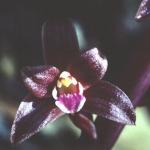Hexalectris nitida (Shining Coralroot)
| USFWS | State of NM | USFS | BLM | Navajo Nation | State Rank | Global Rank | R-E-D Code | NMRPTC Status | Strategy Status |
|---|---|---|---|---|---|---|---|---|---|
| E | S1 | G3 | 2-1-2 | R | SS |
| Overall Conservation Status | Documented Threats | Actions Needed |
|---|---|---|
| WEAKLY CONSERVED | No information |
Surveys for distribution, abundance, threats. |
Johnston, I.M. 1944. Plants of Coahuila, eastern Chihuahua, and adjoining Zacatecas and Durango, III (Orchidaceae, pp. 81-83). Journal of the Arnold Arboretum 25:43-83.
*Liggio, J. and A.O. Liggio. 1999. Wild orchids of Texas. University of Texas Press, Austin.
*Luer, C.A. 1975. The native orchids of the United States and Canada. New York Botanical Garden, Bronx.
Kennedy, A.H. and L.E. Watson. 2010. Species delimitations and phylogenetic relationships within the fully myco-heterotrophic Hexalectris (Orchidaceae). Systematic Botany 35(1):64-76.
For distribution maps and more information, visit Natural Heritage New Mexico







